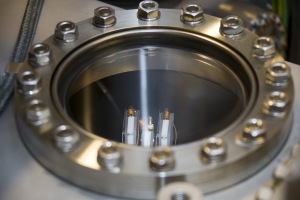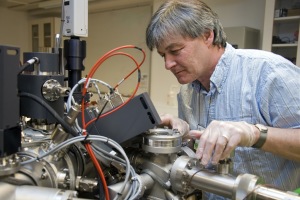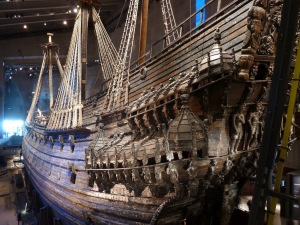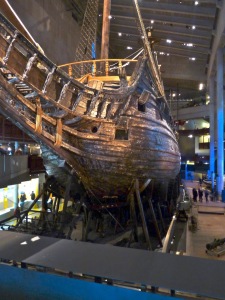Until now most of the posts have been about geologists traveling strictly for fieldwork. However, this is not the only reason geologists travel. Recently I made a non-fieldwork related trip to Stockholm, Sweden to use a Secondary Ion Mass Spectrometer (SIMS) housed at their Natural History Museum. The NordSIM facility is operated as a collaborative effort between the Nordic countries (Norway, Sweden, Finland, and Denmark. It is based around a Cameca 1280 ion microprobe which allows direct in situ micrometer scale measurement of isotopic and elemental compositions. The instrument has applications to a wide range of geological and chemical problems, from U-Pb and O isotopes in zircons (what I am interested in) to light stable isotope analysis of lunar and meteoritic samples. I was also fascinated to learn that many SIMS around the world are also used for analysis of particles collected from nuclear enrichment facilities in politically sensitive areas such as Iran and N. Korea. Dust particles are collect to assure that these countries are not enriching isotopes of uranium that are used for atomic weapons (U235).
 |
| Cameca 1280 Ion Microprobe SIMS |
I used this instrument to analyze zircons for oxygen isotopes which allow me to determine whether or not zircons are derived straight from the mantle or if the zircons have reached the surface and interacted with the atmosphere thus changing its delta oxygen 18 values. Zircons derived straight from the mantle have oxygen isotopes that fall within a specific narrow range and detrital or metamorphic zircons have very different signatures.
 |
| Multi-collector analyzers (photo by Staffan Waerndt, Stockholm Museum of Natural History) |
 |
| The SIMS guru, Martin Whitehouse (photo by Staffan Waerndt, Stockholm Museum of Natural History) |
No trip to Stockholm would be complete without spending a couple of hours at the Vasa Museum. The Vasa is a ship that was designed to be one of the largest warships of the time however it turns out it was a bit too big for its britches. It was built in 1628 and sunk the day of its maiden voyage. The ship was beautifully preserved for over 300 years in the cold waters of the Baltic Sea until it was recovered in 1961. Of course the Vasa is one of a kind as no other ship has been preserved in such spectacular condition.

![]() This work is licensed under a Creative Commons Attribution-NonCommercial-ShareAlike 4.0 International License.
This work is licensed under a Creative Commons Attribution-NonCommercial-ShareAlike 4.0 International License.

